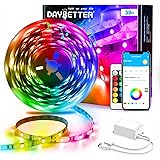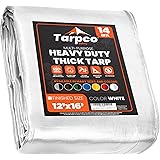Have you ever found yourself in that familiar cycle of replacing light bulbs, seemingly every few months? Or maybe you’ve glanced at your electricity bill, wondering how to trim down those pesky energy costs without living in perpetual gloom? It’s a common dilemma for many homeowners, and often, the solution can be as simple as changing the type of light bulbs you use. Just like the insights shared by Mark Blocker, understanding the fundamental fluorescent light bulb facts can be a game-changer for your home’s efficiency and your wallet.
For decades, the standard incandescent bulb reigned supreme, a familiar glow in countless homes. However, a quiet revolution in lighting technology has ushered in more efficient and long-lasting alternatives. Fluorescent light bulbs, in particular, offer a compelling argument for an upgrade, presenting a stark contrast to their predecessors in terms of both energy consumption and operational life. This isn’t just about a slightly better bulb; it’s about a fundamentally different approach to illumination that translates into tangible benefits for your home and the environment.
Unpacking Fluorescent Light Bulb Efficiency: A Brighter Future
The most striking fact about fluorescent light bulbs, as highlighted, is their incredible energy efficiency. They are about 75% more efficient than a traditional incandescent bulb. Imagine if your car could travel four times further on the same amount of fuel; that’s the kind of leap we’re talking about in energy usage. This isn’t just a number; it represents a significant reduction in the amount of electricity your home consumes specifically for lighting.
How do they achieve this impressive feat? Incandescent bulbs generate light by heating a filament until it glows, a process that wastes a substantial amount of energy as heat. Fluorescent light bulbs, on the other hand, produce light through a chemical reaction. An electric current excites gas inside the bulb, which then emits ultraviolet (UV) light. This UV light then hits a phosphor coating on the inside of the bulb, causing it to glow and produce visible light. This process is far more energy-efficient, meaning more of the energy is converted into light, and less is lost as heat.
Consider a typical 100-watt incandescent bulb. To achieve the same luminous output (brightness), a fluorescent bulb might only require around 23 watts. Over a year, if you have multiple such bulbs operating for several hours daily, these small differences in wattage accumulate into substantial energy savings. These energy-saving light bulbs directly impact your utility bills, reducing your monthly expenses and freeing up funds for other priorities.
The Lumens-Per-Watt Advantage of Fluorescent Lighting
When discussing efficiency, it’s helpful to understand the concept of lumens per watt (lm/W). This metric tells you how much light (lumens) a bulb produces for each watt of electricity it consumes. Fluorescent light bulbs generally boast a much higher lm/W rating than incandescents. For example, a standard incandescent bulb might offer 10-17 lm/W, while a fluorescent bulb can easily deliver 50-100 lm/W. This superior performance translates directly into more light for less power, making fluorescent light bulbs a smart choice for any room in your home.
The Enduring Lifespan of Fluorescent Light Bulbs
Beyond energy savings, another compelling fluorescent light bulb fact is their remarkable longevity. These bulbs can last approximately 12 times longer than their incandescent counterparts. Imagine the convenience! Instead of scrambling to replace a burnt-out bulb every few months, you could go years without needing a replacement, particularly in less frequently used areas of your home.
To put this into perspective, a typical incandescent bulb might last around 750 to 1,000 hours. A fluorescent bulb, whether a linear tube or a compact fluorescent lamp (CFL), can easily operate for 8,000 to 15,000 hours, or even more for high-quality models. This extended operational life isn’t just a minor improvement; it’s a significant leap that reduces the frequency of replacements and the associated hassle.
This durability is especially valuable in hard-to-reach fixtures or high ceilings, where changing a bulb can be an inconvenient chore. Imagine having to climb a ladder to replace a bulb in your vaulted living room ceiling every few months versus every few years. The time and effort saved, not to mention the reduced risk of ladder accidents, are tangible benefits of this extended lifespan.
Cost Savings Beyond the Energy Bill
The combined effect of superior energy efficiency and extended lifespan leads to substantial cost savings. While the initial purchase price of a fluorescent light bulb might be slightly higher than a basic incandescent, the long-term benefits quickly outweigh this initial investment. You save money on your electricity bill every month, and you save money by not having to purchase replacement bulbs as frequently.
Let’s consider a hypothetical scenario: a single light fixture operating 4 hours a day. Over five years, an incandescent bulb (at $1.00 per bulb, 1,000-hour lifespan) would need replacing nine times, costing $9 in bulbs. A fluorescent bulb (at $5.00 per bulb, 10,000-hour lifespan) would only need replacing once, costing $5. Now, factor in the energy savings. If the incandescent uses 60W and the fluorescent 15W, with electricity at $0.15/kWh, the incandescent would cost ~$131 in electricity over five years, while the fluorescent would cost ~$33. That’s a total savings of approximately $102 for just one bulb over five years! Scale this up to all the bulbs in your home, and the impact becomes immense.
Beyond the Basics: Varieties and Considerations for Fluorescent Lighting
When we talk about fluorescent lighting, we’re actually referring to a broad category that includes more than just the spiral CFLs often found in homes. Linear fluorescent tubes (like T8s and T12s) are common in garages, kitchens, and commercial spaces. Each type offers specific advantages and applications.
While the benefits are clear, it’s also important to understand some considerations when choosing fluorescent light bulbs:
- Start-Up Time: Some older or cheaper fluorescent bulbs might take a moment to warm up and reach full brightness, though modern CFLs have significantly reduced this delay.
- Color Temperature: Fluorescent bulbs come in various color temperatures, measured in Kelvin (K). Lower Kelvin numbers (e.g., 2700K-3000K) produce a warm, yellowish light similar to incandescent bulbs, while higher numbers (e.g., 5000K-6500K) create a cooler, bluer, “daylight” effect. Choosing the right color temperature is crucial for setting the ambiance in a room.
- Dimming: Not all fluorescent light bulbs are dimmable. If you require dimming capabilities, ensure you purchase bulbs explicitly labeled as dimmable and pair them with compatible dimmer switches.
- Mercury Content: Fluorescent bulbs contain a small amount of mercury, which is essential for their operation. While the amount is minimal and sealed within the bulb, proper disposal is important. Many retailers and local recycling centers offer collection programs for spent fluorescent light bulbs, ensuring they are recycled safely and responsibly. This responsible disposal contributes to the “Earth friendly” aspect, preventing harmful substances from entering landfills.
Understanding these fluorescent light bulb facts empowers you to make informed decisions about your home’s lighting. From significant energy savings to vastly extended lifespans, the benefits are clear and compelling. Transitioning to fluorescent lighting is a simple yet powerful step towards a more energy-efficient and cost-effective home environment, requiring less maintenance and offering a brighter, more sustainable future.










